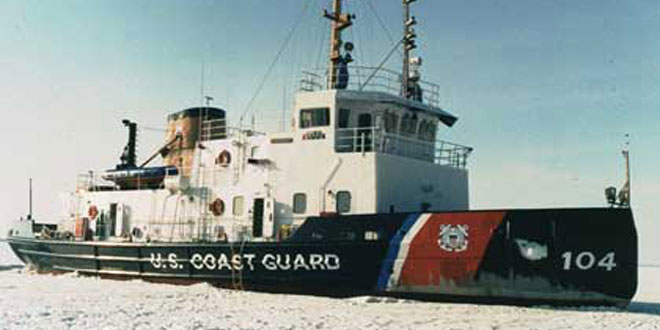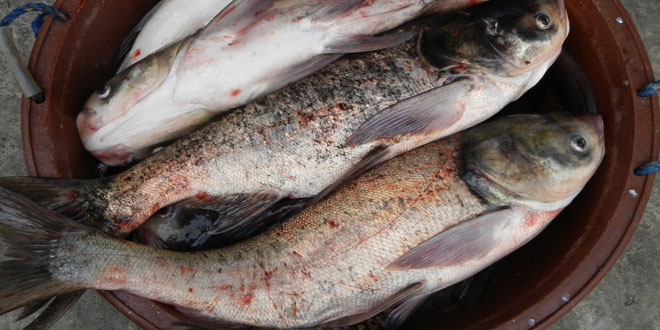Chi-Cheemaun operator optimistic ice won’t hamper sailing season
GEORGIAN BAY––Andy Maillet is Supervisor of the Canadian Coast Guard’s Regional Operation Centre for Central Canada and the Arctic.
In this capacity he dispatches the coast guard icebreaking ships into the Arctic and through the St. Lawrence Seaway system from the Gulf of St. Lawrence to the Lakehead.
His observation is plain: “the ice conditions this year in the Great Lakes are somewhat record setting: Lakes Huron and Superior are almost totally covered in ice,” he told The Expositor Monday of this week in a telephone interview from his Montreal office.
“It’s only this week that we’re seeing some temperatures slightly above freezing, but it’s going to take a lot of heat and rain to start the natural breakup process,” he commented.
“We’re not going to have the type of spring where the ice is here one day and gone the next,” he reiterated.
Ironically, the day of the interview, Monday, March 31, was the first official day of the St. Lawrence Seaway shipping season. It was celebrated by two icebreakers and a hovercraft accompanying the first ships of the season down the river, battling ice all the way, to Lake Ontario.
Both Mr. Maillet and Owen Sound Transportation Company CEO Susan Schrempf agreed there is the possibility that the start of the Chi-Cheemaun’s sailing season may be delayed again this year, but by ice, not by low water and the corresponding need for work on the docks at South Baymouth and Tobermory, as was the case in 2013.
Ms. Schrempf says it’s still too early to tell if Lake Huron’s and Georgian Bay’s frozen depths will cause a delay for the Chi-Cheemaun’s season opener, scheduled for Friday, May 2 this year.
“Looking at the long-term forecast, it says we can expect below average temperatures until mid-April, but below average may not necessarily mean below zero,” the point required to maintain the ice, she noted.
Ms. Schrempf said that, for the Chi-Cheemaun, the immediate concern is getting the ship from her winter berth in Owen Sound to Tobermory.
She said that the Owen Sound Transportation Company has not contacted the Canadian Coast Guard because, with three ice breakers in the Great Lakes, “there certainly wouldn’t be a dedicated one for the ferry.”
From the Canadian Coast Guard perspective, Mr. Maillet said it would be difficult to predict whether the Chi-Cheemaun would be able to start on schedule.
“In order for the ice to start to deteriorate, we need heat, rain. Fog is useful too as are winds.”
Throughout the Great Lakes, Mr. Maillet explained that there is ice virtually everywhere. “The Soo locks opened for shipping on March 25 but the ice conditions on the Lake Superior side of the locks is very extreme. We’re trying to break ice there in anticipation of moving traffic through with assistance of US icebreakers.”
He added that a large St. Lawrence River icebreaker, the Pierre Radisson, was to be travelling up through the lakes beginning Tuesday of this week from Sarnia.
The Samuel Risley, the Canadian Coast Guard icebreaker that usually breaks up the ice in Georgian Bay, is still currently in Nanticoke (on Lake Ontario) where it’s been stationed all winter as there has been some traffic there.
But for the Samuel Risley, the ice in Georgian Bay (estimated at 28 inches in thickness) would test the ship to its limits.
He explained that for Great Lakes shipping, “no one is in a rush just now. Although we’ve had requests to break ice down to Midland (on southern Georgian Bay), but the ships that may want to go into Midland must first go to Thunder Bay to pick up grain shipments.”
“Basically, we’re going from port to port right now. The Welland Canal is open, but there is no traffic moving out of Port Colborne. When will we get an icebreaker to the North Channel and Georgian Bay? We can’t say.”
Referencing Lake Erie, Mr. Maillet said that the ice there is three feet thick, five miles out from shore all around the lake, with not a sign of deterioration.
“What we have is mid-winter, hard-type ice.”
“Mother Nature brought us this winter and this ice,” Mr. Maillet observed. “It’s up to Mother Nature to help with the normal ice melting too.”
“Think warm thoughts,” Ms. Schrempf added during her interview from her Owen Sound office.




